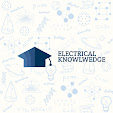ELECTRIC TRACTION
ELECTRIC TRACTION
ELECTRIC TRACTION
The process of moving
any vehicle is called traction. If electric energy is used in this process
is called electric traction.
Electric traction system: - The system which
uses electrical power for traction system i.e. for railways, trams, trolleys,
etc. is called electrical traction
DC Traction
DC traction units use
direct current drawn from conductor rail or an overhead line
The most popular line
voltages for overhead wire supply systems – 15kV DC and 30kV DC.
600V - 750V DC volt range is used for third
rail systems (additional rail is provided for supplying electricity to train
and is called conductor rail).
Disadvantages: -
1. expensive
substations are required at frequent intervals.
2. The overhead wire or third rail must be
relatively large and heavy.
3. Voltage goes on decreasing with an increase in
length
AC Traction
AC Traction units draw alternating currents
from an overhead line.
Typical Voltages Used are:- 25 kV AC, 50 Hz 25
kV AC, 60 Hz
Advantages:-
1. Fewer substations
are required.
2. Lighter overhead current supply wire can be
used.
3. Reduced weight of support structure.
4. Reduced capital cost of electrification
Multi-Systems
Multi-system trains
are used to provide continuous journeys along routes that are electrified using
more than one system.
1. One way to
accomplish this is by changing locomotives at the switching stations.
2. These stations have
overhead wires that can be switched from one voltage to another.
3. Another way is to
use multi-system locomotives that can operate under several different voltages
and current types.


No comments:
If you have any doubts, please let me know